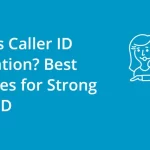Have you ever received an unwanted call from a telemarketer, robocaller, or scammer using caller ID spoofing technology? These types of calls are not only annoying, but they can also be dangerous and lead to financial loss. Fortunately, you can take action against these callers by filing a complaint with the Federal Trade Commission (FTC). In this article, we will discuss how to file an FTC complaint about caller ID spoofing and unwanted calls.
Understanding Caller ID Spoofing and Unwanted Calls
Before we dive into the process of filing an FTC complaint, it’s important to understand what caller ID spoofing is and how unwanted calls can affect you. Caller ID spoofing is a technique used by scammers to mask their true identity and make it appear as if they are calling from a legitimate number. They do this by using software that can manipulate the caller ID information that appears on your phone screen.
Unwanted calls can come in many forms, including telemarketing calls, robocalls, and scams. Telemarketing calls are usually made by companies trying to sell you a product or service. Robocalls are automated calls that can be used for a variety of purposes, such as political campaigns, charity donations, and debt collection. Scam calls are fraudulent calls made with the intention of stealing your personal or financial information.
Filing an FTC Complaint
If you have received an unwanted call or suspect that you have been a victim of caller ID spoofing, you can file a complaint with the FTC. Here are the steps to follow:
- Go to the FTC Complaint Assistant website: The FTC Complaint Assistant is a user-friendly online tool that allows you to report unwanted calls and other consumer issues. You can access the Complaint Assistant by visiting the FTC’s website.
- Choose “Telephone” as the category: After accessing the Complaint Assistant, you will be prompted to select a category for your complaint. Choose “Telephone” to report unwanted calls.
- Provide details about the call: You will then be asked to provide specific details about the unwanted call, such as the date and time it was received, the number that appeared on your caller ID, and the nature of the call (telemarketing, robocall, scam, etc.).
- Provide your personal information: The Complaint Assistant will also ask for your personal information, such as your name, address, and phone number. This information is used to help the FTC investigate the complaint.
- Submit the complaint: After providing all of the necessary information, you can submit the complaint to the FTC. You will receive a confirmation number that can be used to reference the complaint in the future.
Additional Steps You Can Take
Filing an FTC complaint is just one step you can take to protect yourself from unwanted calls and caller ID spoofing. Here are some additional steps you can take:
- Register for the National Do Not Call Registry: The National Do Not Call Registry is a free service that allows you to add your phone number to a list of numbers that telemarketers are not allowed to call. You can register for the Do Not Call Registry by visiting their website.
- Use a call-blocking app: There are several call-blocking apps available for both Android and iPhone devices. These apps can help identify and block unwanted calls before they reach your phone.
- Be cautious with personal information: Never provide personal or financial information over the phone unless you are sure the caller is legitimate. Scammers will often try to trick you into giving them your information by posing as a trusted organization.
How Long Does it Take for the FTC to Respond to a Complaint?
After you file a complaint with the FTC, you may be wondering how long it will take for them to respond. According to the FTC, they typically do not follow up with individual complainants. However, they do review each complaint and use the information to identify trends and patterns in the types of calls being reported.
If the FTC takes legal action against a company based on your complaint, you may receive a refund or other type of compensation. However, this is not guaranteed, and the FTC cannot provide individual legal advice or representation.
What to Do if You’re Still Receiving Unwanted Calls After Filing a Complaint
If you continue to receive unwanted calls after filing a complaint with the FTC, there are a few additional steps you can take:
- Block the number on your phone or through your phone provider.
- Consider changing your phone number, especially if you continue to receive a high volume of unwanted calls.
- Contact your phone service provider to see if they offer additional call blocking or call screening services.



